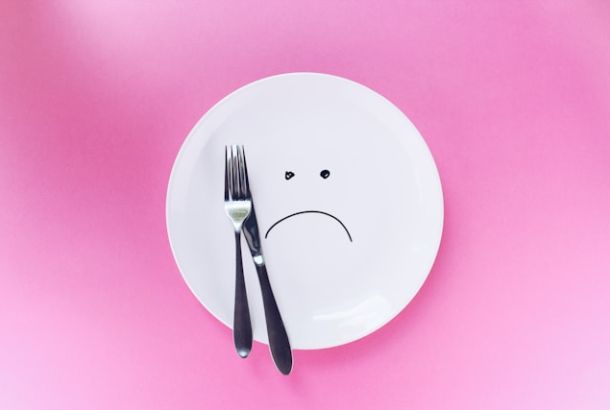Re-defining comfort eating

If someone mentions the words ‘comfort eating’, my mind usually goes straight to that episode of Friends. Specifically, where Rachel and Monica help Chandler through heartbreak with varying degrees of quality ice cream.
The conversation goes like this;
Chandler: “This ice cream tastes like crap by the way.”
Rachel: “Yeah, well that’s that low cal, non-dairy, soy milk junk. We save the real stuff for the truly terminal cases.”
Monica: “Yeah, when you start getting screwed over all the time you gotta switch to low fat.”
(I looked that up by the way — I may be a Friends fan, but I’m not that obsessed)
The thing is, this image saturates popular culture. A classic scene being Bridget Jones eating ice cream underneath a huge duvet. It always seems to be the combination of ice cream and heartbreak, huh. I mean, of course, there’s something oddly comforting and indulgent about spooning creamy ice cream straight from the tub.
But I want to redefine comfort eating.
Firstly, we need to step away from the stereotypes and realise a prejudice. if it wasn’t a slim white woman consuming ~2000 calories in one sitting, would we laugh fondly in the same way? Someone with a larger body would be condemned for being ‘unhealthy’ or promoting bad eating habits. Comfort eating is ‘quirky’ or ‘cute’ on one person but shameful on another. But being small doesn’t make you healthy, and being large doesn’t make you unhealthy (say it louder for those in the back). This mentality is indicative of the pervasive fatphobia and thin privilege that saturates Western culture.
With the rise of social media influencers, fitness, and wellness bloggers, its hard to wade through all the different information that bombards your screens every day. My Instagram feed, I must admit, fluctuates between videos of sensuous mac and cheese pulls to acai bowls and protein oats. I feel constantly torn between the swathes of messages: indulge! Treat yourself! (But only 20% of the time!)
And it always seems to come from the same sort of people. I’m not condemning every white female influencer, but I’m trying to be more aware of what messages I trust. Certain online personalities (I’m not going to name names) have come under fire for their involvement with the body positive movement. Seems counter-productive, right? But its because these people with their toned and perfect bodies — whilst probably incredibly healthy and hardworking — have appropriated the concept. Posting a before and after picture of your bloated belly post-pizza isn’t the same as inhabiting a larger body on a day-to-day basis and experiencing the unspoken prejudices that we like to ignore.
It’s the same issue as before, with comfort eating. And whilst I would love to fix all of these issues of fatphobia I don’t think I (as another slim white woman writing about food) can or should. But there might be another way. We can think of food, not through who is eating, or what we’re eating, but why.
Why does comfort or emotional eating necessarily mean sad? I feel comforted by food in so many other ways. There’s nothing better than takeout pizza and cheap wine when you’re celebrating the small stuff. Or a pie with lashings of gravy to warm you up after a long walk. Or a fresh, homemade salad after a week long all inclusive holiday: all these things make you feel good.
And the fact is, comfort eating is pretty much just (wait for it) … eating. Chemically, it’s impossible to consume food without releasing some dopamine. And sure, not everyone has this privilege of enjoying food, but we need to stop shaming the idea of eating for emotion when its one of the most precious things we have. It forms and sustains relationships, keeps us afloat when life feels too much and is the cornerstone for so many beliefs and traditions.
It’s time we re-think and re-define what we believe to be comfort eating. And along with this, think about the reasons why.







